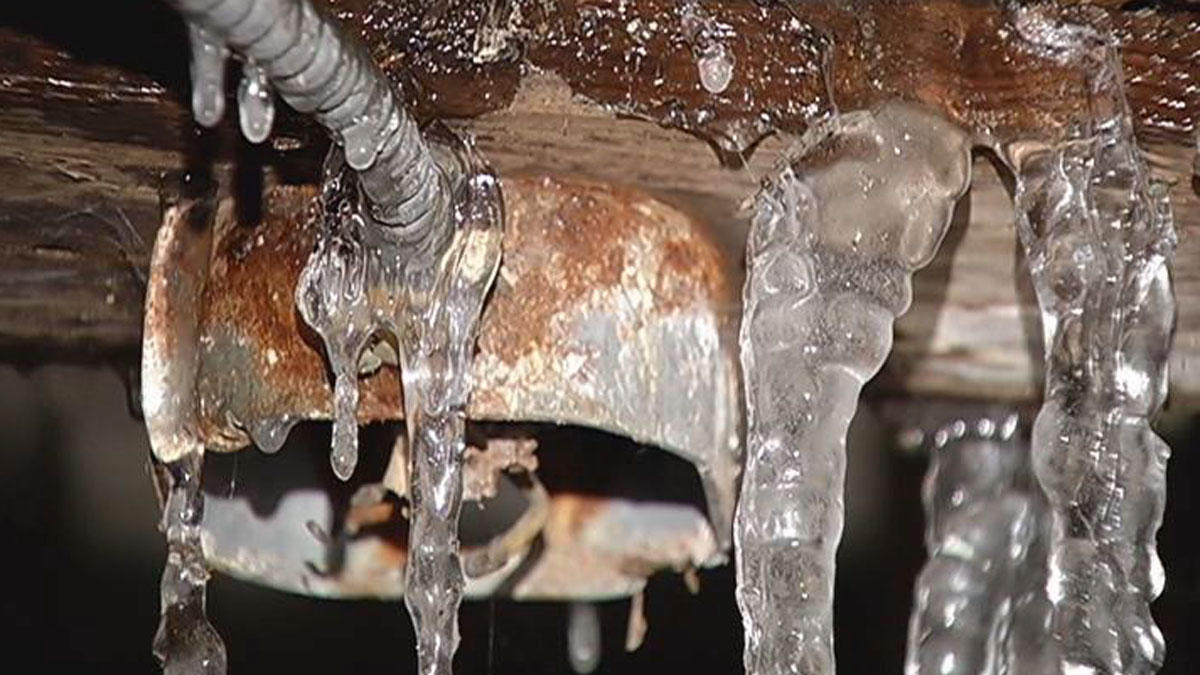What are your ideas about Preventing and dealing with frozen pipes?

Cold weather can wreak havoc on your pipes, particularly by freezing pipes. Here's how to avoid it from taking place and what to do if it does.
Intro
As temperature levels decrease, the threat of frozen pipelines increases, potentially leading to pricey fixings and water damage. Understanding just how to stop icy pipelines is crucial for home owners in cool climates.
Comprehending Icy Pipelines
What causes pipes to ice up?
Pipelines ice up when subjected to temperature levels below 32 ° F (0 ° C) for expanded durations. As water inside the pipes ices up, it expands, taxing the pipe walls and possibly causing them to break.
Dangers and problems
Frozen pipelines can lead to supply of water disturbances, residential or commercial property damage, and expensive repairs. Burst pipes can flooding homes and trigger comprehensive structural damage.
Signs of Frozen Water Lines
Identifying icy pipes early can avoid them from bursting.
Exactly how to recognize icy pipelines
Try to find decreased water flow from taps, uncommon odors or noises from pipes, and visible frost on exposed pipes.
Avoidance Tips
Insulating prone pipes
Cover pipelines in insulation sleeves or use warm tape to safeguard them from freezing temperatures. Concentrate on pipelines in unheated or outside areas of the home.
Heating techniques
Keep interior rooms effectively heated up, particularly locations with plumbing. Open up cabinet doors to permit cozy air to circulate around pipelines under sinks.
Shielding Outside Plumbing
Yard hoses and exterior faucets
Detach and drain yard hoses prior to winter. Set up frost-proof faucets or cover outdoor faucets with shielded caps.
What to Do If Your Pipes Freeze
Immediate activities to take
If you think icy pipes, keep taps open up to relieve stress as the ice melts. Make use of a hairdryer or towels taken in hot water to thaw pipes gradually.
Long-Term Solutions
Architectural adjustments
Think about rerouting pipelines far from outside walls or unheated areas. Add added insulation to attics, cellars, and crawl spaces.
Upgrading insulation
Invest in top quality insulation for pipelines, attic rooms, and wall surfaces. Proper insulation aids keep consistent temperatures and decreases the threat of icy pipes.
Final thought
Preventing frozen pipelines requires positive procedures and quick actions. By recognizing the reasons, indications, and safety nets, property owners can secure their pipes throughout winter.
6 Proven Ways to Prevent Frozen Pipes and Protect Your Home
Disconnect and Drain Garden Hoses
Before winter arrives, start by disconnecting your garden hoses and draining any remaining water. Close the shut-off valves that supply outdoor hose bibs and leave the outdoor faucet open to allow any residual water to drain. For extra protection, consider using faucet covers throughout the colder months. It’s also important to drain water from any sprinkler supply lines following the manufacturer’s directions.
Insulate Exposed Pipes
Insulating your pipes is an effective way to prevent freezing. Pipe insulation is readily available at home improvement stores and is relatively inexpensive. Pay close attention to pipes in unheated areas such as the attic, basement, crawl spaces, or garage. Apply foam insulation generously to create a buffer against the cold. You can also wrap your pipes in heat tape or thermostat-controlled heat cables for added warmth.
Seal Air Leaks
Inspect your home for any cracks or openings that could let in cold air. Seal any holes around the piping in interior or exterior walls, as well as the sill plates where your home rests on its foundation. Additionally, make sure to keep your garage door closed unless you’re entering or exiting. Leaving it open creates a significant air leak that can lead to frozen pipes.
Allow Warm Air Circulation
During cold snaps, it’s essential to allow warm air to circulate evenly throughout your home. Leave interior doors ajar to promote better airflow. Open kitchen and bathroom cabinets to help distribute heat consistently around the rooms. If you have small children or pets, be sure to remove any household chemicals or potentially harmful cleaners from open cabinets for safety.
Let Faucets Drip
A small trickle of water can make a big difference in preventing ice formation inside your pipes. When temperatures drop significantly, start a drip of water from all faucets served by exposed pipes. This continuous flow helps prevent the water from freezing. Additionally, running a few faucets slightly can relieve pressure inside the pipes, reducing the chances of a rupture if the water inside does freeze.
https://choateshvac.com/6-proven-ways-to-prevent-frozen-pipes-and-protect-your-home/

Do you appreciate more info about 6 Ways to Prevent Frozen Pipes? Post a remark down the page. We would be glad to listen to your thinking about this content. Hoping to see you back again soon. Appreciated our piece? Please share it. Help others check it out. I treasure reading our article about Preventing and dealing with frozen pipes.
Schedule An Appointment